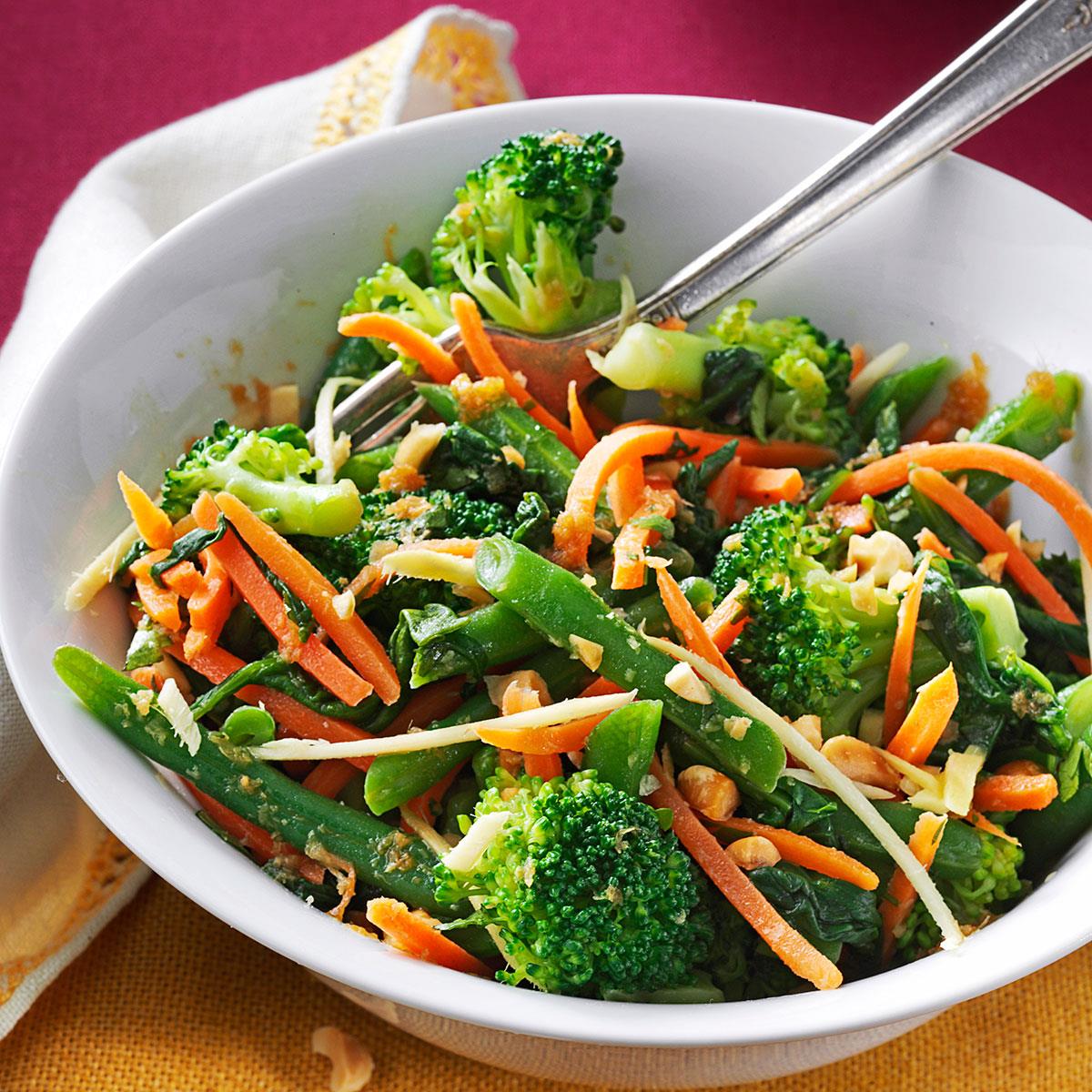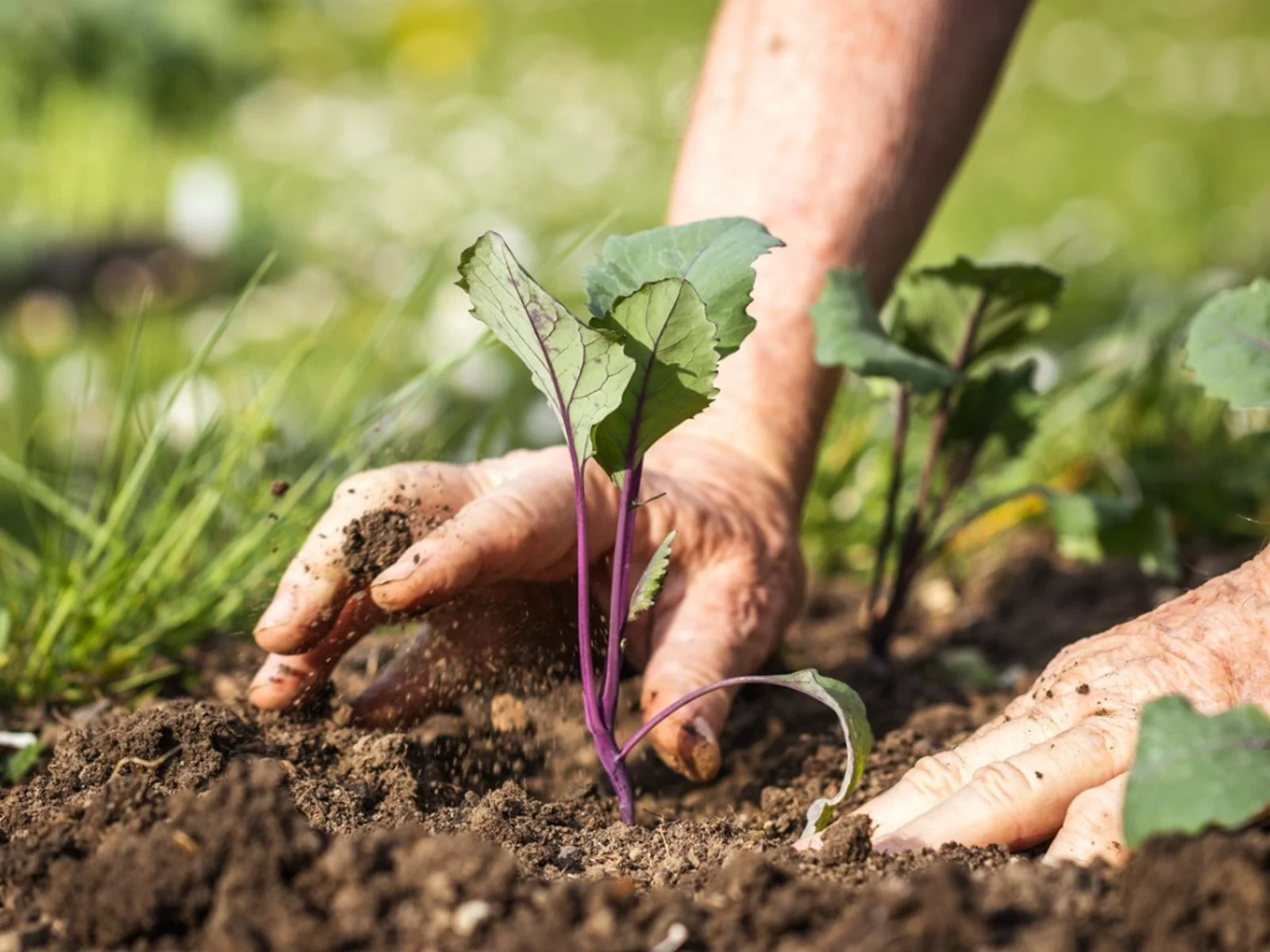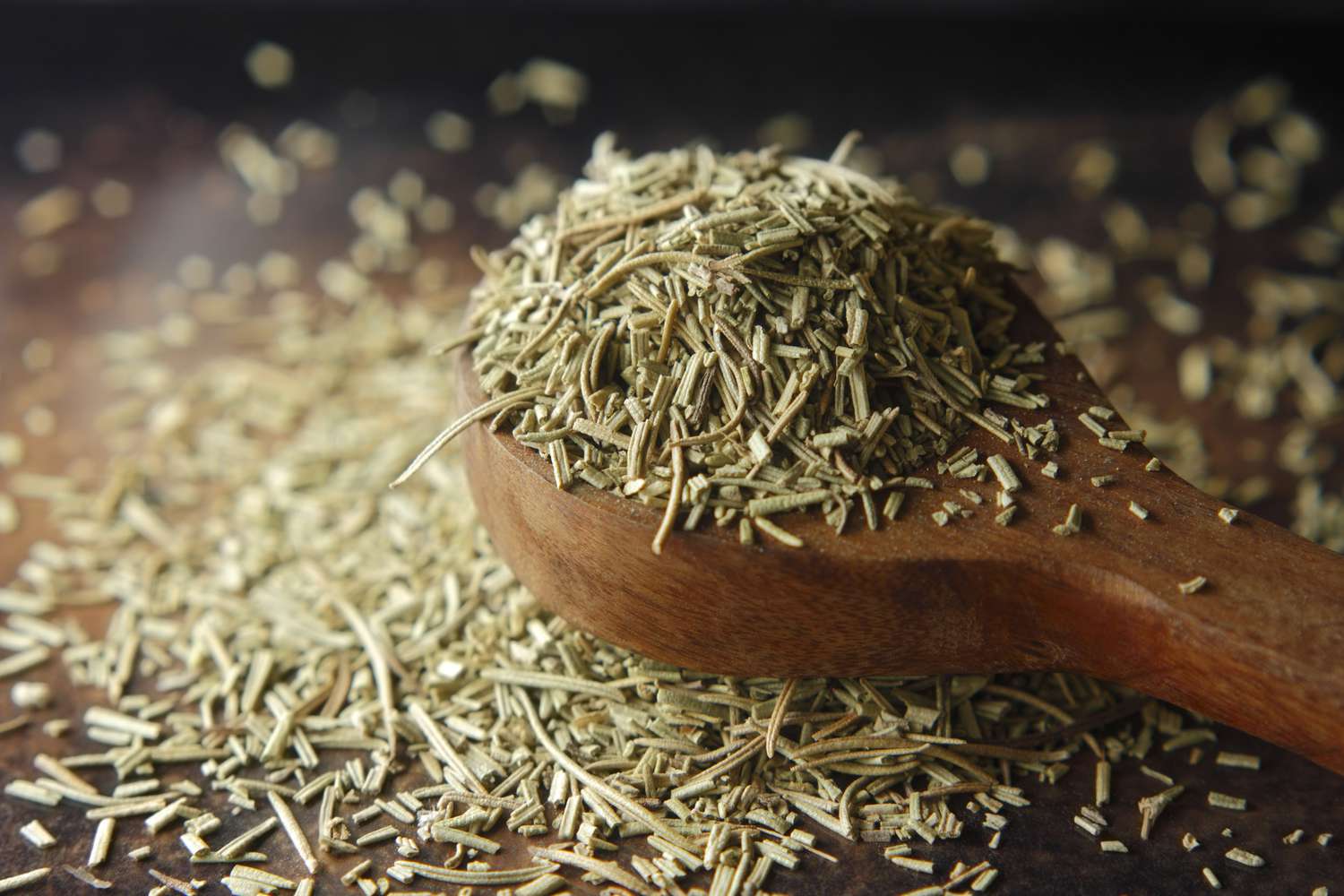Home>Gardening News and Trends>Latest News>How To Season Steamed Vegetables


Latest News
How To Season Steamed Vegetables
Modified: January 22, 2024
Discover the Latest News on How to Season Steamed Vegetables and elevate your culinary experience. Find delicious combinations and expert tips to enhance the flavors.
(Many of the links in this article redirect to a specific reviewed product. Your purchase of these products through affiliate links helps to generate commission for Chicagolandgardening.com, at no extra cost. Learn more)
Table of Contents
Introduction
Steamed vegetables are not only a healthy addition to any meal, but they can also be incredibly delicious when seasoned properly. Whether you’re a seasoned home cook or a beginner in the kitchen, knowing how to season steamed vegetables can elevate your dishes to the next level. By infusing them with vibrant flavors and aromatic spices, you can turn a simple side dish into the star of the show.
Steaming vegetables is a cooking method that preserves their natural nutrients and colors while maintaining a crisp texture. Unlike boiling, steaming helps retain the vegetables’ flavors and prevents them from becoming soggy or bland. With the right selection of vegetables and the perfect balance of seasonings, you can create a delightful and nutritious accompaniment to any meal.
In this article, we will guide you through each step of the process, from choosing the vegetables to serving the final dish. Whether you prefer classic combinations or experimenting with bold flavors, we’ll provide you with a variety of seasoning options to suit different tastes.
So, if you’re ready to take your steamed vegetables to the next level, let’s dive in and explore the world of seasoning!
Step 1: Choosing the Vegetables
The first step in creating deliciously seasoned steamed vegetables is to choose the right vegetables. While you may have personal preferences, it’s also important to consider the flavor profiles and textures that different vegetables offer. Here are some factors to keep in mind when selecting your vegetables:
- Seasonal Availability: Opt for vegetables that are in season as they tend to be fresher and more flavorful. This will ensure that you’re working with the best ingredients.
- Colorful Variety: Aim for a colorful mix of vegetables to create an eye-catching and appetizing dish. Brightly colored vegetables like broccoli, carrots, bell peppers, and cauliflower not only add visual appeal but also offer an array of nutrients.
- Texture Contrast: Incorporate vegetables with different textures to add interesting contrasts in your dish. Choose a combination of crunchy vegetables like snap peas or asparagus, and softer vegetables like zucchini or mushrooms.
- Personal Preferences: Consider your own taste preferences and dietary needs. If you have a particular vegetable that you love or want to increase your intake of a specific nutrient, incorporate it into your selection.
Remember, steaming is a gentle cooking method that preserves the natural flavors and textures of the vegetables. So, choose fresh and high-quality produce to ensure the best outcome.
Experiment with different vegetable combinations to find your favorites. Whether you’re going for a medley of mixed vegetables or focusing on one dominant vegetable, the possibilities are endless. Be sure to have a variety of vegetables on hand, so you can mix and match depending on your mood and the occasion.
Step 2: Preparing the Vegetables
Once you’ve selected your vegetables, it’s time to prepare them for steaming. Properly preparing the vegetables ensures even cooking and enhances their flavors. Follow these steps to get your vegetables ready:
- Washing and Cleaning: Start by washing the vegetables thoroughly under cool running water to remove any dirt or debris. Use a vegetable brush if necessary, especially for root vegetables like carrots or potatoes. For leafy greens, remove any wilted or damaged leaves.
- Trimming and Cutting: Trim the ends of the vegetables and remove any inedible parts. For example, trim the ends of green beans or snap off the woody ends of asparagus. Cut the vegetables into uniform sizes to ensure even cooking. You can slice, dice, or leave them whole depending on your recipe or personal preference.
- Blanching (Optional): Some vegetables benefit from blanching before steaming to soften them slightly. This is especially helpful for denser vegetables like broccoli or cauliflower. To blanch, bring a pot of salted water to a boil, add the vegetables, and cook them briefly for about 1-2 minutes. Then, transfer them to an ice bath to stop the cooking process.
Remember that the preparation process may vary slightly depending on the specific vegetables you’re working with. Take note of any specific instructions or recommendations for each vegetable to ensure the best results.
Once your vegetables are prepared, you’re ready to move on to the next step: steaming. Steaming helps retain the vegetables’ nutrients and natural flavors while keeping them crisp and tender at the same time. Let’s dive into the art of steaming in the next step!
Step 3: Steaming the Vegetables
Steaming is a simple and gentle cooking method that retains the natural flavors, colors, and nutrients of the vegetables. It helps to preserve their crisp texture while ensuring they are cooked to perfection. Follow these steps to steam your vegetables:
- Steamer Selection: Choose a steaming method that suits your needs. There are various options available, including a stovetop steamer basket, bamboo steamer, or an electric steamer. Each method can deliver excellent results, so choose the one that is most convenient for you.
- Water Level: Fill the bottom of your steamer with water, ensuring it doesn’t touch the vegetables when they’re placed in the steamer basket. The water level should be high enough to create steam but not too much that it boils over when heated.
- Preheating: Preheat your steamer by bringing the water to a boil over medium heat. This ensures that the steam is generated quickly once you add the vegetables.
- Arranging the Vegetables: Place the prepared vegetables in a single layer in the steamer basket. Make sure they are not overcrowded, as this can lead to uneven cooking. If you have a variety of vegetables with different cooking times, consider steaming them separately and combining them later.
- Steaming Time: Steam the vegetables until they are cooked but still retain a slight crunch. The cooking time will vary depending on the type and size of the vegetables. Generally, tender vegetables like broccoli or snow peas may take 3-5 minutes, while denser vegetables like potatoes or carrots may take 10-15 minutes. Keep a close eye on the vegetables and check for doneness by piercing them with a fork.
Steaming times may also depend on how you prefer your vegetables. If you like them more tender, steam them for a few minutes longer. It’s important not to overcook the vegetables as they might become mushy and lose their vibrant color and nutrients.
Once the vegetables are steamed to perfection, it’s time to move on to the next step: seasoning! In the following step, we’ll explore the various seasoning options to enhance the flavors of your steamed vegetables.
Step 4: Seasoning Options
Now that your steamed vegetables are cooked and ready to be served, it’s time to elevate their flavors with a variety of seasonings. Here are some delicious seasoning options to consider:
- Simple Salt and Pepper: Sometimes, simplicity is key. A sprinkle of salt and pepper can enhance the natural flavors of the vegetables without overpowering them. Use freshly ground black pepper and a pinch of sea salt to bring out the best in your steamed veggies.
- Herbs and Spices: Experiment with different herbs and spices to add depth and complexity to your dish. Fresh herbs like parsley, cilantro, basil, or dill can provide a burst of freshness. Spices like garlic powder, paprika, cumin, or chili powder can infuse your vegetables with a delightful aromatic kick.
- Citrus Zest: Brighten up your vegetables with a touch of citrus zest. Grate the zest of lemon, lime, or orange over the steamed vegetables to add a refreshing tang. The citrus zest adds a zingy element that complements the natural sweetness of the vegetables.
- Flavored Oils and Vinegars: Elevate the taste of your steamed vegetables with infused oils or flavored vinegars. Drizzle some extra virgin olive oil infused with garlic, chili, or herbs for a rich and savory flavor. Balsamic vinegar, raspberry vinegar, or apple cider vinegar can add a tangy twist to the vegetables.
- Soy Sauce or Tamari: For an umami-packed seasoning, drizzle some soy sauce or tamari over your steamed vegetables. These savory sauces can add depth and a hint of saltiness to your dish. Be mindful of the sodium content and adjust accordingly to your taste preferences.
- Nutritional Yeast: If you’re looking to add a cheesy and nutty flavor to your vegetables, sprinkle some nutritional yeast on top. This vegan-friendly ingredient adds a savory and slightly umami taste, making your steamed vegetables more satisfying.
Feel free to mix and match these seasoning options or create your own unique blends. The key is to experiment and find what flavors you enjoy the most. Personalize your steamed vegetables to suit your taste buds and complement the rest of your meal.
Now that you’ve seasoned your steamed vegetables, it’s time to move on to the next step: actually seasoning the vegetables. In the following step, we’ll guide you through the process of adding the chosen seasonings to your steamed vegetables for maximum flavor infusion.
Step 5: Seasoning the Steamed Vegetables
With a variety of flavorful options at your disposal, it’s time to take your steamed vegetables to the next level by adding the chosen seasonings. Follow these steps to properly season your steamed vegetables:
- Taste and Adjust: Before adding any seasonings, taste a piece of the steamed vegetables to assess their natural flavor. This will help you determine how much seasoning you need and what flavors will complement the vegetables best.
- Even Distribution: To ensure every bite is flavorful, evenly distribute the seasonings over the vegetables. You can either sprinkle the seasonings directly on top or gently toss the vegetables in a bowl with the seasonings to coat them evenly.
- Start Light: When seasoning, it’s always better to start with a lighter hand and gradually add more if needed. You can always add more seasonings, but it’s challenging to undo an overly seasoned dish.
- Layer Flavors: Combine multiple seasonings to create a depth of flavors in your dish. For example, you can start with a sprinkle of salt and pepper, then add some garlic powder and finish with a squeeze of lemon juice.
- Customize to Taste: Adjust the seasonings according to your personal preferences. If you prefer a stronger flavor, add more spices or herbs. If you want more acidity, add a bit more citrus juice or vinegar. Don’t be afraid to experiment and make the dish your own.
Remember that seasoning is subjective, and everyone has different taste preferences. Take the time to taste and adjust as necessary to create a dish that perfectly suits your palate.
Now that your steamed vegetables are well-seasoned, it’s time to move on to the final step: serving and enjoying your flavorful creation!
Step 6: Serving Suggestions
Now that you have perfectly seasoned and steamed vegetables, it’s time to serve them in a way that elevates their flavors and adds visual appeal to your dish. Here are some serving suggestions to inspire you:
- As a Side Dish: Steamed vegetables make a wonderful side dish alongside grilled meats, roasted chicken, or fish. Arrange them on a plate or in a serving bowl and garnish with fresh herbs or a sprinkle of grated Parmesan cheese.
- In Salads: Add a generous serving of steamed vegetables to your salads for an extra burst of color and nutrition. Toss them with your favorite greens, some protein, and a flavorful dressing for a satisfying and wholesome salad.
- In Stir-Fries: Incorporate the seasoned steamed vegetables into stir-fries for a quick and healthy meal. Add them towards the end of the cooking process, so they retain their crunchiness and vibrant colors.
- In Grain Bowls: Build a nutritious and filling grain bowl by layering steamed vegetables over a bed of cooked grains like quinoa, brown rice, or couscous. Top with some protein, such as grilled chicken or tofu, and drizzle with a tasty sauce for a complete and satisfying meal.
- In Wraps or Sandwiches: Include the seasoned steamed vegetables in wraps or sandwiches for added texture and flavor. Pair them with your favorite condiments and protein, such as hummus, sliced chicken, or avocado, for a tasty and wholesome sandwich.
- In Pasta Dishes: Toss the steamed vegetables with cooked pasta for a colorful and nutritious pasta dish. Add some olive oil, garlic, and grated Parmesan cheese for a simple yet flavorful meal.
Feel free to get creative and explore different serving options based on your preferences and the type of meal you’re preparing. Remember to garnish your dishes with fresh herbs, a squeeze of lemon juice, or a sprinkle of toasted nuts to add an extra layer of taste and texture.
Enjoy your delicious and seasoned steamed vegetables in your preferred serving style and savor the flavors and nutrients they bring to your plate!
Conclusion
Congratulations! You have learned how to season steamed vegetables to perfection. By selecting the right vegetables, properly preparing them, steaming them just right, and adding flavorful seasonings, you can create a delightful and healthy side dish or main course.
Remember to choose vegetables that are in season and offer a variety of colors and textures to create a visually appealing dish. Take the time to wash, trim, and blanch your vegetables when necessary to ensure even cooking. Steaming them helps retain their nutrients and vibrant colors while maintaining a crisp texture.
When it comes to seasoning, the options are endless. Whether you prefer simple salt and pepper, herbs and spices, citrus zest, flavored oils and vinegars, soy sauce or tamari, or even nutritional yeast, don’t be afraid to experiment and find your favorite combinations.
Once your steamed vegetables are seasoned to perfection, remember to serve them in a way that enhances their flavors. Whether as a side dish, in salads, stir-fries, grain bowls, wraps or sandwiches, or added to pasta dishes, the versatility of steamed vegetables allows you to incorporate them into various meals and culinary creations.
So, whether you’re looking to add more nutrition to your daily meals or simply want to enjoy the natural goodness of vegetables, follow these steps and have fun exploring the world of seasoned steamed vegetables. Get creative in the kitchen and make every meal a flavorful and nutritious experience!








